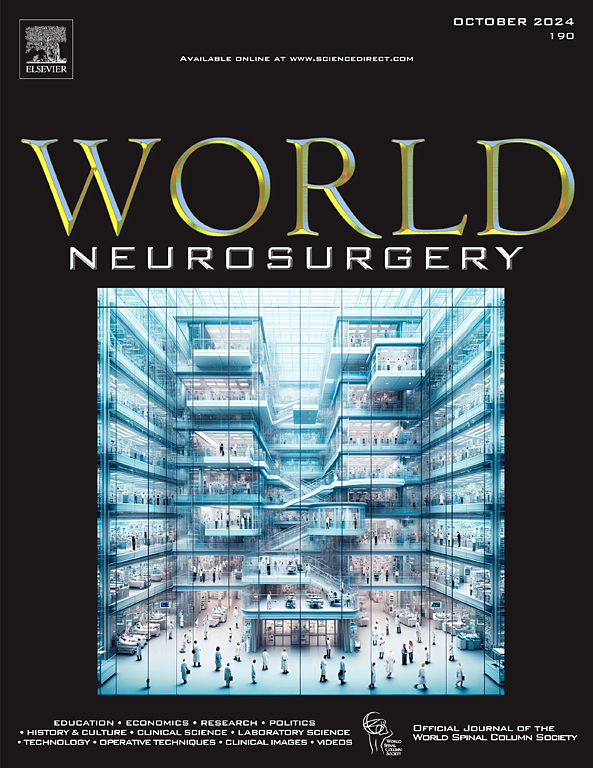Ultrasound-Guided External Ventricular Drain Insertion After Decompressive Craniectomy
IF 1.9
4区 医学
Q3 CLINICAL NEUROLOGY
引用次数: 0
Abstract
Background
Ultrasound guidance offers real-time visualization of patient-specific anatomy during external ventricular drain (EVD) insertion. A craniectomy defect provides a sonolucent window, enabling the use of a large, low-frequency probe with deep penetration and a wide field of view. While specialized burr-hole probes exist, use of a curvilinear probe through a craniectomy defect for bedside EVD placement has not been previously described.
Methods
Using a curvilinear probe, we performed ultrasound-guided bedside insertion of a left frontal EVD through a hemicraniectomy flap.
Results
Bedside ultrasound enabled visualization of the entire supratentorial ventricular system. Drain insertion was successfully performed, with immediate sonographic visualization of the catheter tip in the left frontal horn. Placement was confirmed with a computed tomography scan.
Conclusions
Bedside ultrasound-guided EVD insertion in post-craniectomy patients can be a valuable method for safely accessing the ventricle in the face of abnormal or distorted anatomy.
超声引导下开颅减压术后EVD置入。
背景:超声引导提供了心室外引流插入过程中患者特异性解剖的实时可视化。颅骨切除术缺损提供了一个透光窗口,可以使用具有深穿透性和宽视野的大型低频探头。虽然存在专门的钻孔探头,但使用曲线探头通过颅骨切除术缺损放置床边脑室引流尚未见报道。方法:采用曲线探头,超声引导下通过半颅骨切除术皮瓣插入左额叶外心室引流管。结果:床边超声显示了整个幕上心室系统。引流管插入成功,立即超声显示导管尖端在左额角。通过计算机断层扫描确认放置位置。结论:床边超声引导下的脑室外引流插入术,在解剖结构异常或扭曲的情况下,是一种安全进入脑室的有价值的方法。
本文章由计算机程序翻译,如有差异,请以英文原文为准。
求助全文
约1分钟内获得全文
求助全文
来源期刊

World neurosurgery
CLINICAL NEUROLOGY-SURGERY
CiteScore
3.90
自引率
15.00%
发文量
1765
审稿时长
47 days
期刊介绍:
World Neurosurgery has an open access mirror journal World Neurosurgery: X, sharing the same aims and scope, editorial team, submission system and rigorous peer review.
The journal''s mission is to:
-To provide a first-class international forum and a 2-way conduit for dialogue that is relevant to neurosurgeons and providers who care for neurosurgery patients. The categories of the exchanged information include clinical and basic science, as well as global information that provide social, political, educational, economic, cultural or societal insights and knowledge that are of significance and relevance to worldwide neurosurgery patient care.
-To act as a primary intellectual catalyst for the stimulation of creativity, the creation of new knowledge, and the enhancement of quality neurosurgical care worldwide.
-To provide a forum for communication that enriches the lives of all neurosurgeons and their colleagues; and, in so doing, enriches the lives of their patients.
Topics to be addressed in World Neurosurgery include: EDUCATION, ECONOMICS, RESEARCH, POLITICS, HISTORY, CULTURE, CLINICAL SCIENCE, LABORATORY SCIENCE, TECHNOLOGY, OPERATIVE TECHNIQUES, CLINICAL IMAGES, VIDEOS
 求助内容:
求助内容: 应助结果提醒方式:
应助结果提醒方式:


